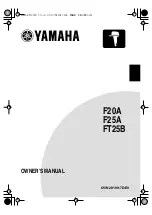
Hardware Description
2012 Microchip Technology Inc.
DS52033A-page 13
1.3
ANALOG INPUT STRUCTURE
Two differential input paths allow external signal sources to be easily connected to the
MCP3911 input. Screw-terminal connectors J2 and J5 are 3-pin connectors that act as
both screw-type and clip-on post connectors.
The connectors J2 and J5 can be used to force either channel from a differential to
single-ended configuration. R4 and R11 (on CH0), and R19 and R21 (on CH1) act as
locations for burden resistor connectors for any current transformer inputs.
1.4
UNIVERSAL SERIAL BUS (USB)
The MCP3911 ADC Evaluation Board for 16-Bit MCUs also contains a USB connection
for connecting the evaluation board to a PC. On the board, there is an MCP2200 USB
to UART converter that creates a virtual COMM port on the PC. The MCP3911 ADC
Evaluation Board for 16-Bit MCUs also features a RS232 connector, just in case it is
required. The RS232 line driver is connected to the same UART pins of the MCU. For
this reason, a 3-pin jumper (J16) is present on the evaluation board to select which
serial communication will be used: USB or RS232. The following figure summarizes the
connections between the ADC, MCU, USB to serial converter and the RS232 line
driver.
FIGURE 1-5:
USB Block Diagram.
The MCP2200 is powered from the USB with 5V. The Q1 transistor (see
)
is used to disconnect the board from the PC when it is powered down to avoid power
consumption.
Since the PIC24F runs at 3.3V, a level shifter was used to modify the signal level to 5V
as required by the MCP2200; this is done with U11 (see
The 7.3728 MHz value of the crystal is required to achieve the correct baud rate values
for higher speed. This design uses a baud rate of 920.6 kbaud and for this baud rate,
the register value is 3 (decimal).
Note:
To use a screw-terminal connector as a post connector, pull up the blue
plastic top to access the posts.
PIM
Module
USB
TX
RX
MCP2200
ADC
MCP3911
RF6/SCK1
RF7/SDI1
RF8/SDO1
SCK
SDO
SDI
RS232 Driver
USB
RS232
TX
RX
RF2/U1RX
RF3/U1TX














































